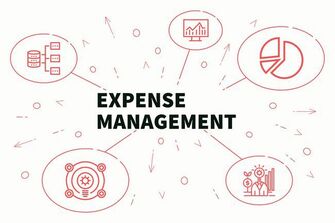In Pursuit of Profit
Read our expert article below or sign up to get articles sent to your inbox.
 Call it what you want – cost cutting, cost containment, downsizing, cutbacks, or expense management. It all describes the same approach of reducing costs to weather an obstacle or downturn. In times of both slow decline and also rapid disruption we see companies go to the same well of pulling back on expenses. Some organizations may take a more surgical approach, carefully carving out smaller expenses from targeted areas to improve their overall financial health, while others may have a more knee-jerk reaction, slashing costs across all areas. But whether cuts are being done with a scalpel or a cleaver, expense management software has become the must-have tool for managing costs, especially while staffing challenges remain high. These days companies tend to implement expense management software for just that purpose – to help with reducing costs related to purchasing and processing reimbursements. And with only 54% of companies currently tracking the cost of processing expense reports, this has become an area ripe for cost reduction over the last year. However, at their core, they are not actually designed strictly as “cost cutting” tools because they do so much more than just reduce expenses. Find out what kind of critical activities expense management software improves as well as which tools your peers recommend in our user-generated guide:
What is Expense Management? Expense management is the process by which expenses are tracked, verified, and justified as well as the policies and procedures around each of these actions. For instance, if an office manager spends $200 on office supplies for employees to use, this expense needs to be recorded somewhere, checked against the receipt for these supplies, and allocated to the right business expense category to ensure accurate financial reporting. Previously, companies used to do this all manually – keeping paper copies of receipts and reimbursement requests and giving them to their accounting departments each month or quarter for processing. Of course, this methodology is prone to errors and vulnerable to fraud (not to mention slow!), which is why a better solution was developed. In the early days of digitization, companies started using spreadsheets to keep track of expenses and do the calculations related to managing these expenses. Today, high-tech expense management software providers streamline tasks like purchasing and submitting expense reimbursements (as well as other activities like processing payroll, sending customer invoices, and managing vendor payments in some cases) in real-time. With the prevalence of mobile app usage, most expense management tools also have a mobile version for employees to use on the go while they are traveling for work as well. These advancements have allowed companies to scale up operations by managing more expenses across more employees more effectively, to encourage business growth. Why is it Important? The goal of expense management is to control spending to mitigate waste, prevent fraud, and keep expenses in line with budgets. Expense management protects businesses from themselves to reduce risk – from internal fraud as well as employee unfairness claims. Effective expense management monitors spending to mitigate the risk of expense reimbursement fraud by allowing companies to:
This is more important than ever before, with the incidence of embezzlement on the rise according to recent data. But remember, expense management is not simply the process of tracking employee spending or submitting and approving expense reimbursements. Expense management is also concerned with the policies and procedures that guide spending to articulate what the company will and will not pay for. With many employees working virtually, this has become even more important to ensure that accounting controls are being upheld across remote workers. A thorough expense management policy improves employee satisfaction and protects the business legally from accusations of unfairness or discrimination. But even for companies that are already managing their risk level effectively, expense management software plays a critical role in cash flow management. Having real-time expense data allows companies to make more informed purchasing and investing decisions across everything from hiring to R&D. Most Popular Expense Management Software for Small Business Regardless of how expenses are managed, doing so carries a cost. Expense management software makes managing costs less expensive because it removes much of the labor expenditures associated with doing so. Additionally, the best apps and platforms will integrate seamlessly into your company’s existing operations to automate tedious tasks and reduce headaches. So, which ones are the best? Ask your fellow small business owners what their favorite expense management systems are, and these names will likely come up in the conversation:
Remember, expense management tools are just that – tools, pieces of the larger cash flow puzzle. If you need help managing cash flow, lean on an experienced accounting leader, either internally or externally, to guide your company’s financial decision-making. If you do not have this kind of personnel in-house, a consulting accountant can provide the cash flow management services your organization needs to succeed. Whether it is recommending and implementing new expense management technology or managing your ongoing costs as part of broader financial leadership needs, an outsourced accounting service gives small businesses access to the same kind of resources that larger companies retain. |
SUBSCRIBE:DOWNLOAD:DOWNLOAD:Categories:
All
Archives:
July 2024
|
Services |
Company |
|
2/17/2022